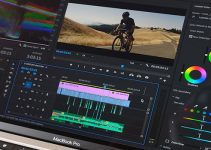The camera gear industry is an ever moving and ever changing one. In the days of film, after years of slowly evolving cameras, digital was born and the race has begun. Leading at the head there are a handful of companies, those that we can call the usual suspects, like Sony and their Venice, Panasonic with the Varicam, and two of the most famous names on the scene, RED and ARRI.
The last two seem kind of antithetic names in a way. On the one hand, RED are always trying to push boundaries by giving higher and higher resolutions to every cinematographer out there. On the other hand, there’s the mighty ARRI ALEXA, that got the 4K resolution just a few months ago. Nonetheless, the latter still manages to be the most used camera at the Academy Awards, even with the relatively poor resolution of ARRI’s camera lineup.
Yes, we know that the color science behind that sensor is something no one has managed to achieve in other companies, but still… So, between the 8K MONSTRO VV and the almost brand new ALEXA LF, we have two different approaches and philosophies to consider.
To help fellow DOPs that may struggle to choose whether to walk in the light or in the dark side, seasoned cinematographer Phil Holland, that you may remember for the breathtaking composite images of New York city in 12K, put together this insightful comparison test for those who are facing this kind of dilemma, so be ready to take notes.
Let’s start by comparing the tech specs for these two sensors. They are quite similar in size, the MONSTRO VV being a little bit wider while the LF is a little bit taller at respectively 40.96×21.60mm and 36.70×25.54mm making the ALEXA overall a little larger as for the surface area of the sensor.
As you can see in the screen grab compared to the S35 film negative there is a huge difference, the area of the ALEXA LF is more than twice the old negative in comparison, the MONSTRO is in the same ballpark, but obviously has a much higher pixel density than ARRI’s sensor that almost doubles the resolution of the image.
How does this affect the image? Well, the first thing you’ll notice is that these sensors will have a much shallower depth of field, and as a rule of thumb, when comparing similar resolutions a wider sensor means less but bigger pixels and that equals to better low-light performance.
The RED offers a full sensor readout raw in 8K hitting the 60fps mark, it’s a little bit less than the Alexa’s 90fps at full resolution while filming in ARRI Raw, but we easily expected that.
After all the MONSTRO’s brain has to process twice the information, and in fact, a windowed sensor readout equivalent to the S35 negative at 5K gives us 96fps, while a similar framing on the ALEXA would be roughly between the 2.8/3.4K even though it’s not available at the moment.
On both cameras, we have top-notch color science, no doubt about it. The skin tones rendition is wonderful, also in different and varying lighting conditions. It seems that RED has gone a long way in these years, as the gap between this generation of sensors has reduced a lot.
Both cameras seem to have a nice highlight roll-off while noise in the shadow is barely noticeable when pixel-peeping. Even the greenish tint we used to associate with RED is quite reduced and only visible in the ungraded log file. One very interesting note that Philip makes toward the end of the video refers to OLPFs or Optical Low-Pass Filters.
Instead of adopting ARRI’s system with a non-removable OLPF and filter stack, RED has gone the other way, offering different OLPFs, and opening even to third-party ones. Cinematographer’s choice is now to have a Standard OLPF or one optimized for low light or skin tones. The third-party market opens up to a wide range of possibilities, from the always-on glow to infrared filming, not to mention RED in-house H20 OLPF (a RED enhancing filter for underwater shots).
It seems that it’s time to break that piggy bank of yours, right? Just keep in mind that ARRI has just released the ALEXA Mini LF, and that could dramatically change your decisions.
[source: Phil Holland]
B&H Order Link:
RED DIGITAL CINEMA DSMC2 BRAIN with MONSTRO 8K VV Sensor
Disclaimer: As an Amazon Associate partner and participant in B&H and Adorama Affiliate programmes, we earn a small comission from each purchase made through the affiliate links listed above at no additional cost to you.



